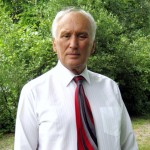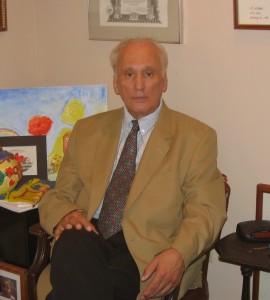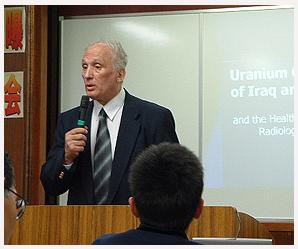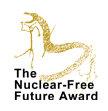Biography
 Asaf Durakovic
Asaf Durakovic
Medical Research Director

Dr. Asaf Durakovic, MD, PhD, DSc, FACP, is professor of Nuclear Medicine and Radiology and a specialist in all aspects of nuclear and radiation medicine. He has 35 years research and clinical experience on radioisotopes including strontium, uranium, and plutonium. His extensive experience includes research into nuclear disaster medicine in the U.S., Canada, Europe, Middle East, and Asia. He has published over 75 scientific papers on the medical effects of radiation and radioactivity. Post-doctorate Fellowship, British Medical Council, Harwell, Oxfordshire, England Post-doctorate Fellowship, National Research Council of Canada, Ottawa. Dr Durakovic assisted with The Children of Chernobyl Project, Hadassah University, Jerusalem. Former Head of the Department of Nuclear Medicine, King Faisal International Specialist Hospital, Riyadh, Saudi Arabia. He has given over 250 international invited lectures. He served as the United States Medical Team Leader in the American-Soviet Joint Nuclear Verification Experiment in Soviet Central Asia. He presented his expert views before the Congress of the United States, European Parliament, and both houses of Parliament of Japan. Laureate of the International Peace Prize Jaipur, India, in 2004.
Dr. Durakovic originally described the Gulf War Syndrome in both military and civilian population of Iraq. UMRC field teams at his initiative were deployed in Iraq, Afghanistan, Balkans, and Gaza to study the effects of radioactive weapons in both civilian and military populations. Current sustained research is focused on both somatic and genetic effects of internal contamination of the human population and biosphere with organotropic radioactive isotopes with special emphasis on transuranic elements.
Awards
Nuclear-Free Future Award
2004: Jaipur, India


Abridged CV
Other Academic and Professional Qualifications
International Honors and Degrees
Awards
Professional Licenses
Invited Lectures
List of Publications
Journal Abstracts and Proceedings
Books and Manuals
Journal Articles
Medical Qualification
Other Academic and Professional Qualifications
Read & Listen
An Interview with DU Expert Dr. Asaf Durakovic, Banned Terms, Brian Covert, 2004
Democracy Now Interview with Dr. Durakovic – DU in Iraq, 2003 (Article)
Democracy Now Interview with Dr. Durakovic – DU in Iraq, 2003 (Audio)
The NI Interview – Fighting on Behalf of American Gulf War Vets, Felicity Arbuthnot, 1998